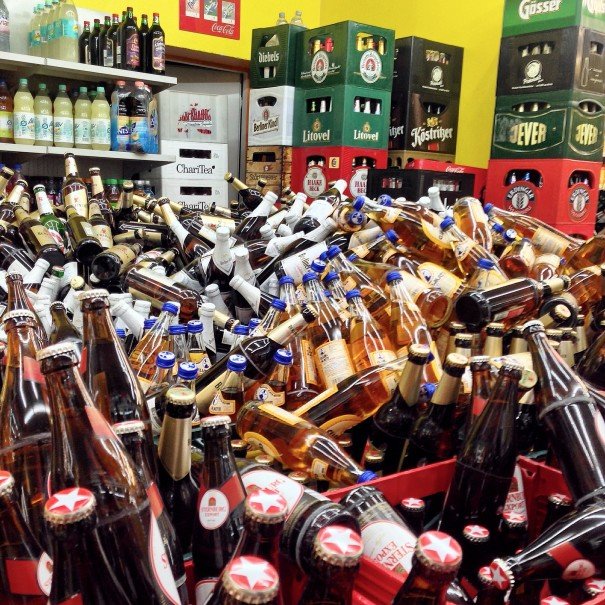
My Kingdom for an IPA in Beer‑Soaked Berlin

My Kingdom for an IPA in Beer‑Soaked Berlin
Pilsners in Germany
The beer mountain towered before me, twinkling under the fluorescent lights of a late-night corner store. Behind dozens of crates stacked to eye level, a refrigerated wall showcased bottles of every description, resplendent in kaleidoscopic labels with unpronounceable names.
I’d arrived in Berlin for the first time with a clear mandate. I would leave no beer untasted in my mission to sample every variety of Germany’s most prized product.
Now I stood mouth agape. How could I ever try them all? My mind balked at the possibility.
Not a moment to lose, I snatched a bottle opener hanging from a string at the cash register, cracked the top off a pilsner, and walked brazenly into the night. No open-container laws here.
I soon realized that this sort of neighborhood shop is ubiquitous in Berlin. In fact, in a city where week-long strikes cripple public transportation, supermarkets close on Sundays, and cafés have little regard for posted opening hours, round-the-clock access to beer is one of the only services you can count on.
The right to enjoy a cold one with lunch is such a fundamental part of the German experience that it is written into many job contracts. On my first day of work at a TV station in Berlin, I was surprised to find my colleagues sunning themselves with pilsners outside the office cafeteria shortly before noon. Throughout the city, beer gardens double as playgrounds so parents can let their offspring run loose, although perhaps it’s the other way around.
And the beer in Berlin is cheap. At just seventy cents for a half-liter bottle of Sternburg, affectionately called a Sterni, it’s a daily staple. Even in the bank-breaking world of airport terminals, a Berliner Pilsner sells for less than the cheapest bottle of water.
Yet as the heady days of summer dragged on, I slowly came to a sobering realization. One month after my arrival, I stood again before the humming corner-store fridge, scouring the Czech imports for something new. Pilsner or Hefeweizen? The choices stopped there.
Like many facets of life here, beer is not taken lightly. The major brewers are traditionalists, haunted by the specter of an ancient beer purity law permitting a limited number of ingredients. As a point of pride, most brands produce more or less the same bland combination of barley, hops, water, and yeast.
That’s fine for the local palette. Several of my German colleagues have recoiled in disgust when handed hoppy, high-proof IPAs. However, as an American raised in cities where craft beer is king, the uniformity in Berlin became numbing.
Luckily, the city is home to many expatriates united by the longing for a bitter punch in their beer. As a result, hops are increasingly available in hipster haunts at luxury prices.
In one of the world’s great beer cities, my call to arms has become a never-ending quest for imported brews.